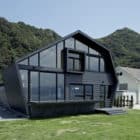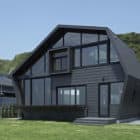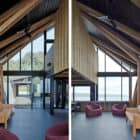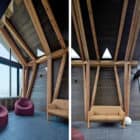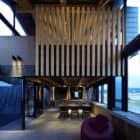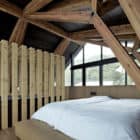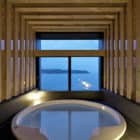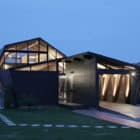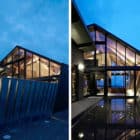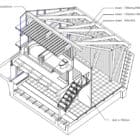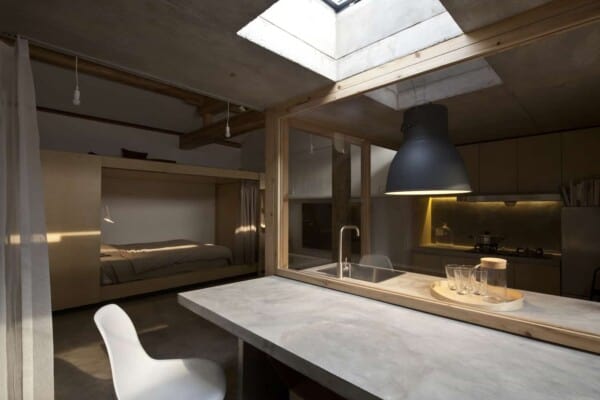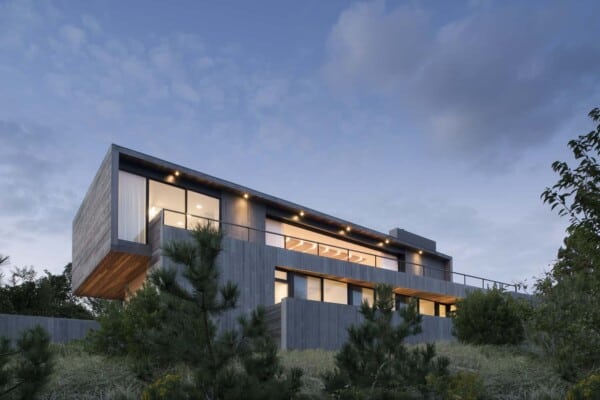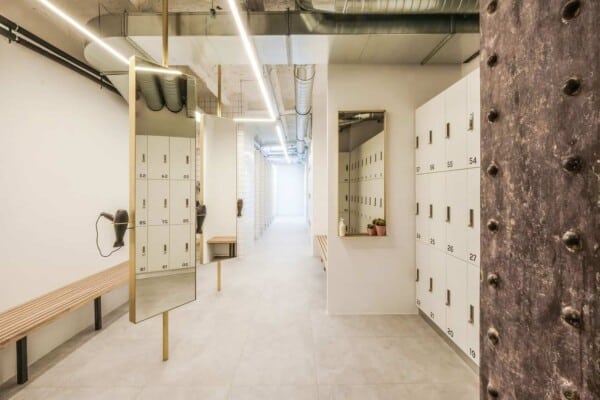Located in Chiba, Japan is the Villa SSK by Takeshi Hirobe Architects.
The architects took cues from the surrounding natural features when designing the home.
Villa SSK by Takeshi Hirobe Architects:
“The location for this project was adjacent to the calm and tranquil waters of Tokyo Bay. When we first visited the site, we were immediately overwhelmed by the presence of the ocean. Soon, however, we became attuned to the subtle cues coming from the surroundings, such as the movements of the sun, the flow of the wind, the scent of the tide, the stirrings of the plants, and the presence of the rocky mountain. We were particularly impressed by the sea and the soaring verticality of the sky overhead, as well as the rocky mountain on the opposite side and the vegetation growing on them. For this reason, we decided to design a building that would serve to connect these mountains to the imposing expanse of the ocean.
The client requested a comfortable, generously proportioned living, dining and kitchen area, a bathroom overlooking the ocean, a guest room, and a spare room that could be used to display his beloved car. The portion of the house encircled by the central area, guest room and spare room was turned into a tiled central courtyard where dogs can play. The courtyard also serves as an outdoor living room where large numbers of guests can gather and mingle.
Water can also flow into the courtyard to create a basin that reflects the subtle nuances of the surrounding light and wind. Timber panel wall-building and timber space trusses were used to create a structure that connects the ocean-facing side and mountain-facing sides of the house. Although the trusses themselves occupy a wide space, gaps have been left in between the different materials. By angling the walls obliquely in accordance with the necessary spacing and throat gaps required for the truss structure, we were able to eliminate a certain oppressiveness from the interior.
Architecture ought to be rooted in the place it occupies. The architectural form of this building somehow emerged during the long process of analyzing and studying the location. Although the design process was supposed to have entailed a frantic accumulation of decision-making and choosing between possible options, the finished building gives one the strange, lingering impression of having been constructed according to some law or other.”
Photos by Koichi Torimura





















